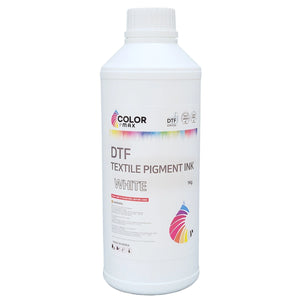🎨 DTF Ink Printer – Everything You Need to Know About Direct-to-Film Printing
If you’re diving into custom apparel or product decoration, a DTF Ink Printer can be a game‑changer. This full-length guide covers everything from how the technology works to choosing the right ink, printing workflows, and professional tips.
📘 To understand the broader technology behind it, visit Wikipedia on Direct-to-Film printing.
✅ What Is a DTF Ink Printer?
A Ink printer is a specialized printer (often modified from flatbed or wide-format models) that prints full‑color designs onto PET film using DTF ink—including a white ink layer. After printing, adhesive powder is applied, and the sheet is heat-cured. Finally, the design is transferred onto fabric via heat press. This method allows vibrant, durable prints on almost any material.
🧼 It works on cotton, polyester, blends, nylon, leather, and more—without pretreatment.
🎯 Benefits of Using a DTF Printer
-
Full‑Color Printing with White Ink: Achieve vivid and accurate colors, even on dark fabrics.
-
High Durability: Prints withstand washing and retain integrity over time.
-
Flexible Fabric Compatibility: Unlike DTG or sublimation, DTF works on a broader range of materials.
-
Low Setup Cost: Ideal for small runs or print-on-demand operations without needing screens or pretreatment.
-
Scalable Workflow: Gang sheets allow efficient batch prints and cost savings.
🧰 DTF Printer Setup & Workflow
1. Choose the Right Printer Base
Select a printer compatible with refillable ink systems—often models from Epson or Mimaki modified for DTF use.
2. Install DTF Ink
Refillable ink tanks allow for CMYK + white ink. White ink must be recirculated to prevent settling.
3. Prepare Design Files
Use high-resolution artwork (300 DPI), export as PNG with transparency or vector formats. Set up a white layer under colors for dark garments.
4. Print onto Film
Load PET film, set the software to print with white ink backing. Ensure proper ICC profiles and color calibration for accurate output.
5. Apply Adhesive Powder
While ink is still wet, sprinkle adhesive powder evenly then heat-cure at approximately 160–180 °C to bond it to the film.
6. Curing & Pressing
After curing, let the film cool. Cut out designs or gang sheets and apply with heat press at 300–325 °F for 10–15 seconds. Choose between hot and cold peel types depending on the film and fabric.
🎨 Ink Types & Quality Comparison
| Ink Type |
Pros |
Cons |
| Pigment Ink |
Great color, stable in curing |
May require maintenance to avoid clog |
| Dye-Based Ink |
Vivid color, softer feel |
Can fade faster in wash |
| White Ink |
Essential for dark fabrics, bright prints |
Requires careful circulation and maintenance |
Using certified DTF ink with pigment and white components ensures reliable results and durability.
🧼 Printer Maintenance Tips for DTF Ink Machines
-
Run Weekly Maintenance Cycles: Keep printheads clean, especially white ink lines.
-
Use Quality PET Film: Prevents misfeeds or poor adhesion.
-
Store Ink Properly: Keep sealed in a cool, dry place. Shake white ink before refilling.
-
Watch Humidity: High humidity affects powder adhesion; keep workspace dry.
-
Inspect Nozzles regularly and clean if color gaps appear.
🧩 Ideal Use Cases for a DTF Printing Machine
-
Small apparel brands needing custom designs on demand
-
Event merchandise with personalized names or logos
-
Sports jerseys with full-color images
-
Print-on-demand shops seeking textile versatility
-
Merch creators, influencers, DIY entrepreneurs
Advantages include minimal setup, high flexibility, and professional output without volume restrictions.
🌟 Why Choose DTF Print House?
For those looking to start or scale their DTF operation, DTF Print House offers:
-
Expert guidance on printer setup and ink selection
-
Layout tools and proof previews for custom DTF prints
-
Advice on adhesive powder, curing times, and press settings
-
Support for first-time users and industry professionals
Whether you're ordering custom prints or setting up your own printer, their site is a valuable resource and print partner.
✨ Pro Tips for Best DTF Results
-
Always run test prints before full runs to calibrate output
-
Use precision film cutting tools for neat edges
-
Control ambient temperature and humidity for consistent results
-
Label ink lines and maintain print settings per substrate type
-
Store prints in flat, cool, and dry conditions to preserve quality
🏁 Final Takeaway
A Direct to Film Ink Printer unlocks professional-level customization with ease. When paired with proper ink selection, maintenance, and workflow, it delivers prints that are bold, durable, and adaptable to most fabric types. Whether you're growing a merch brand or offering custom services, DTF is a versatile and reliable choice.
Looking to design and print your first transfer—or need guidance to get started? Visit DTF Print House and tap into expert tools, resources, and support for your DTF journey.
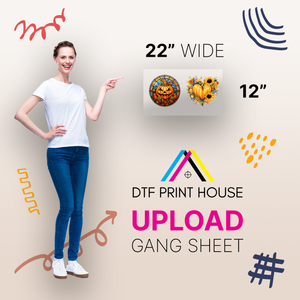
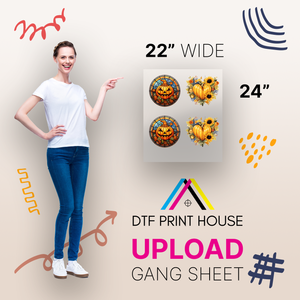 Vendor:DTF Print House
Vendor:DTF Print House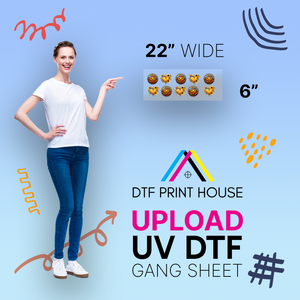
 Vendor:DTF Print House
Vendor:DTF Print House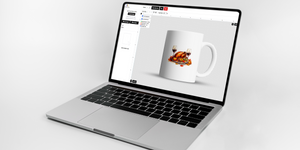 Vendor:DTF Print House
Vendor:DTF Print House